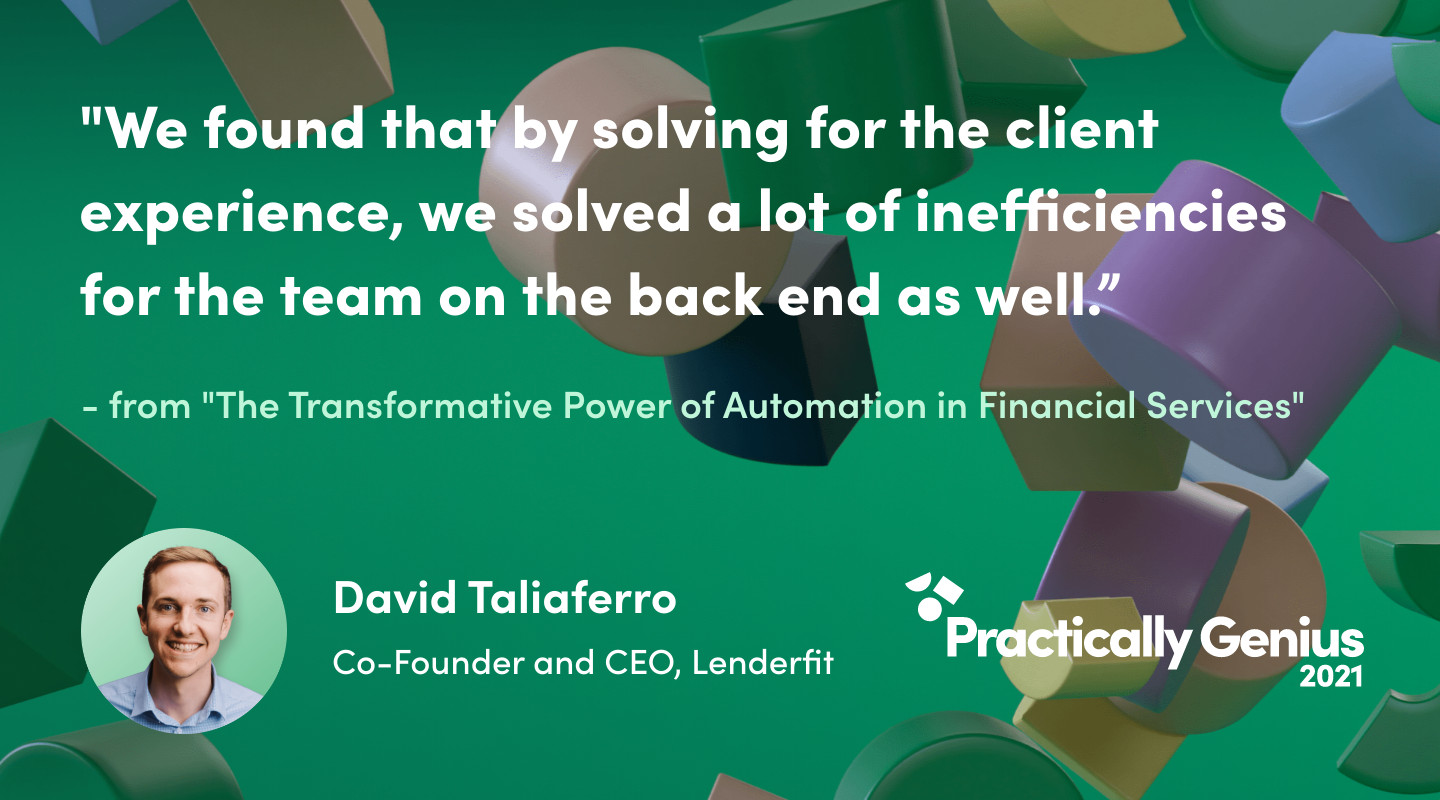The ways of the past no longer work in the financial services sector.
Branch experiences used to be the top priority for financial institutions, but now it’s just as important to create a best-in-class digital experience.
Consumers across the globe are turning to digital channels for financial services at a faster rate than ever before. According to a recent Temenos survey of 4,700 banking customers worldwide, 65% prefer to use a mobile banking app versus going into a branch. In fact, in-branch banking ranked at the very bottom of preferred banking features in a March 2021 Insider Intelligence report.
The data makes one thing clear: customers expect excellent digital experiences from your institution.
Although the COVID-19 pandemic pushed many financial institutions to digitize, it happened at a rapid pace in order to address short-term needs. Now is the time to strategically rethink processes, technology, and tools for the long haul. Here are some tips on how to continue your financial institution’s digital transformation into 2022 and beyond, from experts who work across a variety of financial institutions.

That’s practically genius! Below is just a snapshot of what panelists shared during “The Transformative Power of Automation in Financial Services” panel. Watch the full panel now to get all their expert tips in under 40 minutes.
Reevaluate Technology and Processes
Our panelists brought up two big issues that continue to create barriers to developing an excellent digital experience: a lack of digitization and automation. Many financial institutions struggle to create smooth digital experiences due to:
- Legacy systems
- Paper processes
- A lack of interdepartmental tools
- Long compliance reviews
- Technical systems reliant on IT
- Manual data entry
These barriers impact speed of service, employee productivity, and information management. They make it difficult for internal teams to get their work done, which then has a direct impact on the customer experience.
Aaron Oplinger, Group Product Manager at NCR, recommends financial institutions audit their systems, technology, and processes. When service issues are identified, institutions can then “take advantage of digital solutions in order to drive efficiencies and manage processes differently than they are traditionally used to.”
The key to having a successful year in 2022 depends on trying new systems, tools, and processes. Keeping up with customer expectations will require adapting to new digital norms and eliminating inefficiencies that have existed for years.
Focus on the Customer Experience
When considering your digitization priorities for 2022, don’t overlook the customer experience. Customers who face clunky interfaces, piles of paperwork, or inefficient processes tend to look elsewhere for their financial needs after just a few unsatisfactory interactions.
But a focus on improving the customer experience doesn’t only impact the day-to-day interactions of your customers. David Taliaferro, Co-Founder and CEO of Lenderfit, pointed out that it has a ripple effect on the entire organization.
“We found that by solving for the client experience, we solved a lot of inefficiencies for the team on the back end as well.” When you take the time to dissect customer experience pain points, you’ll begin to see many of the same issues impact internal systems and employees as well.

With an average customer attrition rate of 15% and a cost of $500 to acquire a new customer, financial service providers must make smart, strategic decisions regarding the customer experience. Consider infusing automation into your customer service center, loan department, and data collection processes to improve efficiency, accuracy, and speed of service.
Invest in No-Code
One way to digitize many areas within your organization is by investing in no-code tools. No-code is a type of software that allows anyone to create digital applications without writing a single line of code. It involves using tools with an intuitive, drag-and-drop interface to create a unique solution to a problem.
These tools allow non-technical workers, in any department, to create the processes, products, and tools they need to get work done—without needing support from IT. They help organizations become more digitally agile, which makes it easier to edit, change, and adapt workflows with limited investment of time, money, and technical resources.
All three of the panelists believe no-code has a place in the tech stack of financial institutions. From empowering non-technical workers to building workflows in hours versus weeks, they all deem no-code as an important part of the future of financial service providers.
Learn More: Discover why no-code tools are quickly becoming a requirement in this digital-first world.
Don’t Focus Solely on Digitization
Thomas Kane, Senior Vice President of Tri Counties Bank, points out that many financial institutions focus so much on digitization and automation that they forget about one key market differentiator: people.
“A competitive advantage of a financial institution relative to fin tech is very frequently its people,” he stated.
Digitizing and automating processes is important, but tools and technology can only help your organization progress so much without the right employees in place. The key to success is to find the right employees and then empower them with tools to make their jobs more effective and efficient.
Preparing Your Financial Institution for the Future
If anything is clear from our industry experts, it’s that the future is about ditching outdated, inefficient processes and progressing into a more digitized world. With the right tools, people, and processes in place, your organization can exceed its goals in 2022.
Our panel of experts have even more to share on the many intricacies of digitization, handling change management, and meeting the expectations of your customers. Watch “The Transformative Power of Automation in Financial Services” panel now by heading over to practicallygenius.com.











